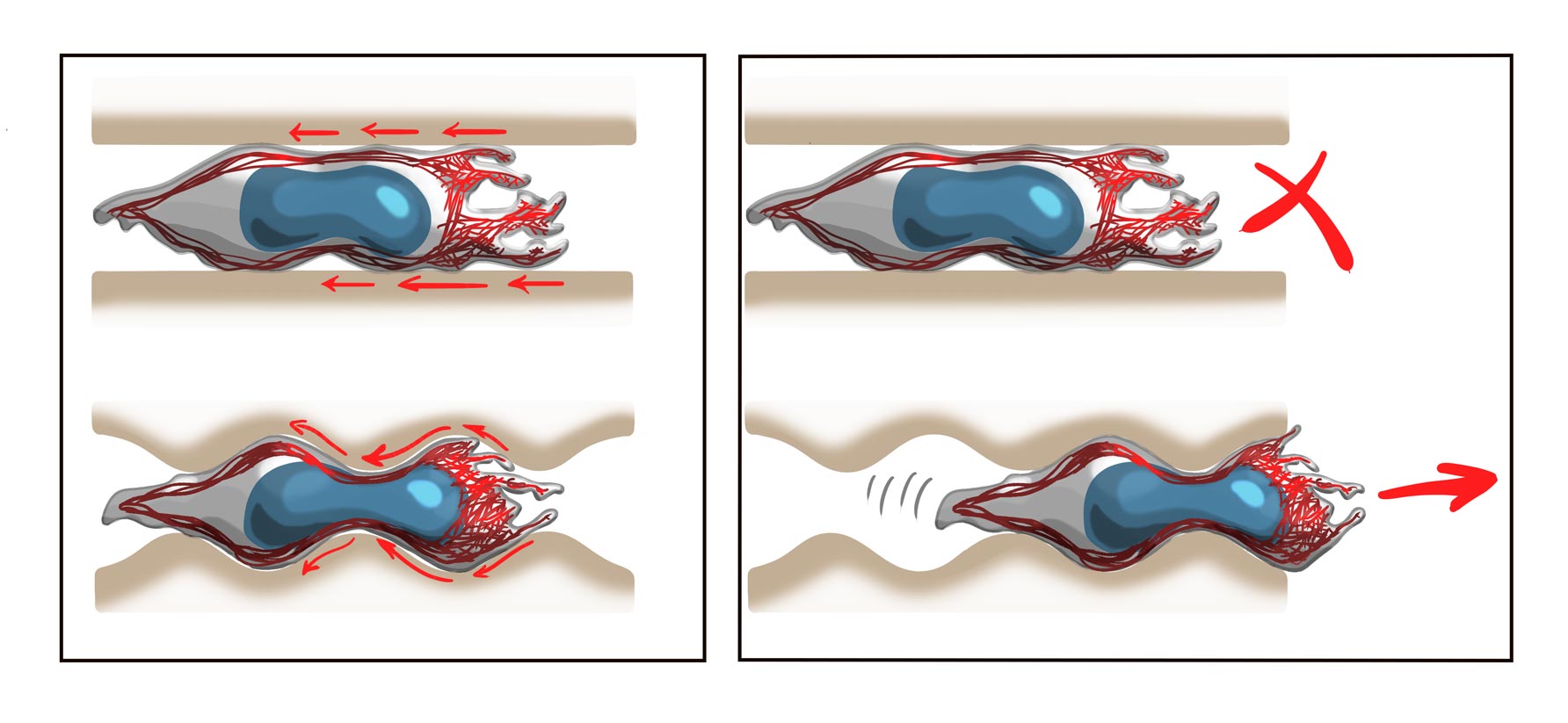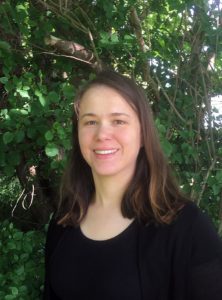May 13, 2020
“Off-road” mode enables mobile cells to move freely
Basic biomechanical principle of cell migration revealed – IST Austria study published in Nature

Cancer cells and leukocytes are able to move through tissue and organs quickly. However, it is not fully understood how these mobile cells manage to travel and survive far away from their place of origin. In a new Nature study, the group of Michael Sixt at the Institute of Science and Technology Austria (IST Austria) has revealed a general biomechanical principle of cell migration that allows cells to move freely, especially in rough terrain.
Whilst the whole world is in lockdown during the current Corona crisis, certain cells within our bodies are still travelling long-distance: while this happens when you develop pneumonia, any ordinary cut on your finger will also trigger white blood cells—aka leukocytes—to instantly move out of your blood vessels into the site of inflammation. Similarly, cancer cells, which can originate in any tissue or organ, can also spread and reproduce far away from their place of origin. The result: a metastasis.
Usually, every cell within the organism binds to its surrounding via specific adhesion receptors that are present on its plasma membrane. As universal “glue” between cells and their surroundings, these adhesion receptors, or integrins, either stabilize a cell if it needs to remain immobile, or serve as anchors when the cell climbs through the tissue. But how can certain types of cells such as white blood cells flexibly crawl through different tissues, although these tissues are composed of very distinct molecules that do not necessarily match the adhesion receptors?
Moving with and without a “glue”
The mystery has been solved in a recent Nature study by the group of Michael Sixt at the Institute of Science and Technology Austria (IST Austria) and collaborators from France. Combining experiments with physical models, the scientists describe a new mechanism of cell locomotion that works completely independent of a cell specifically binding to the extracellular environment. Instead, the cells use the geometry of the environment to propel themselves.
In their experiments, the biologists used different types of leukocytes from which they genetically eliminated the function of integrins to interrupt the binding between the cells and their extracellular environment. While integrins are essential for the survival and movement of almost all cell types, the IST Austria scientists had discovered in a previous study that leukocytes can move and survive without integrins. The same turned out to be true for some cancer cells.
Icy grounds ahead!
To analyze the locomotion mechanism that allows cells to migrate in the absence of adhesion, the scientists focused on the geometry of the environment rather than its molecular composition. They engineered tiny cell-sized “microfluidic” channels with different wall geometries: from completely smooth to rough or serrated texture. They then let the cells migrate through these channels to observe that the integrin-deprived cells were not able to move forward when the walls were smooth and parallel. “The cells were ‘running on the spot’—just like a car tire would spin on icy grounds,” says Anne Reversat, first author of the study and former IST Austria postdoc, who is now doing research at the University of Liverpool. “However, when the walls were textured with bumps, the cells could efficiently migrate without integrins. Cells that still carried their integrins could equally migrate in both rough textured and smooth channels.”

The right grip to go everywhere
By looking closer experimentally and theoretically at the biomechanics of such “off-road” cell movement, Reversat et al. uncovered the unifying mechanical theme that underlies both modes of locomotion: Actin—the filamentous building material of the cell’s cytoskeleton—flows from the front of the cell to the tail end. This “retrograde actin flow” is the force within the cell that, once coupled to the environment, drives the cell body forward. Force-coupling can happen via integrins that penetrate the plasma membrane and thereby connect the intracellular actin with the extracellular substrate.
As the scientists found, however, actin cannot only couple through integrins; it can also couple without any transmembrane receptors. Reversat: “The retrograde flow generates intracellular shear forces that push against the channel walls whenever there is a bump. If the walls are parallel, or the bumps are too far apart, this does not work. Another way to see this is that the cell propels itself by changing its shape over time. After all, leukocytes are amoeboid cells—‘amoibos’ being the Greek word for ‘changing’. As the fine structure of tissues is geometrically very complex, amoeboid cells can always rely on this mode of locomotion. This makes them enormously adaptable. Essentially, they can go everywhere.”
Watch corresponding video on YouTube
A leukocyte migrates in a microfluidic channel without any transmembrane force-coupling. When the road presents numerous bumps the cell move fast (left side), but when the bumps are too far apart or the track is smooth, the cell runs on the spot (right side). © IST Austria – Sixt group
Publication
Anne Reversat, Florian Gaertner, Jack Merrin, Julian Stopp, Saren Tasciyan, Juan Aguilera, Ingrid de Vries, Robert Hauschild, Miroslav Hons, Matthieu Piel, Andrew Callan-Jones, Raphael Voituriez & Michael Sixt. 2020. Adhesion-free cell migration by topography-1 based force transmission. Nature. DOI: 10.1038/s41586-020-2283-z
Funding information
The IST Austria project part was supported by funding from the European Research Council (ERC Starting Grant no. 281556 and Consolidator Grant no. 724373) as well as grants from the Austrian Science Fund (FWF).



